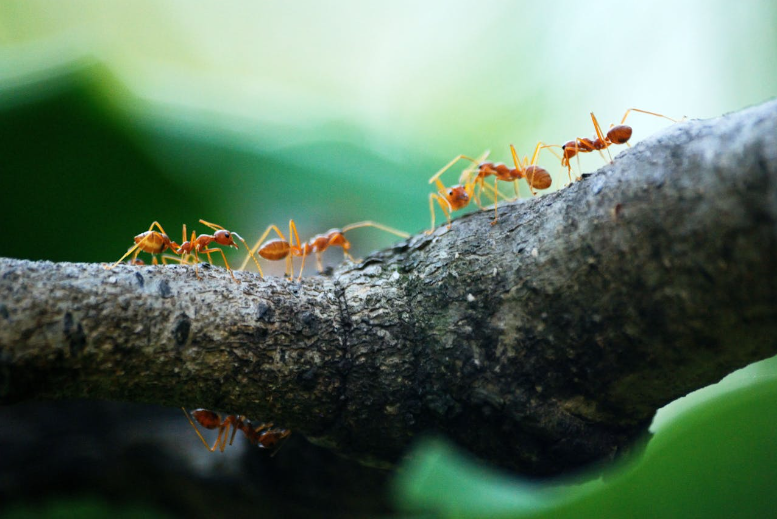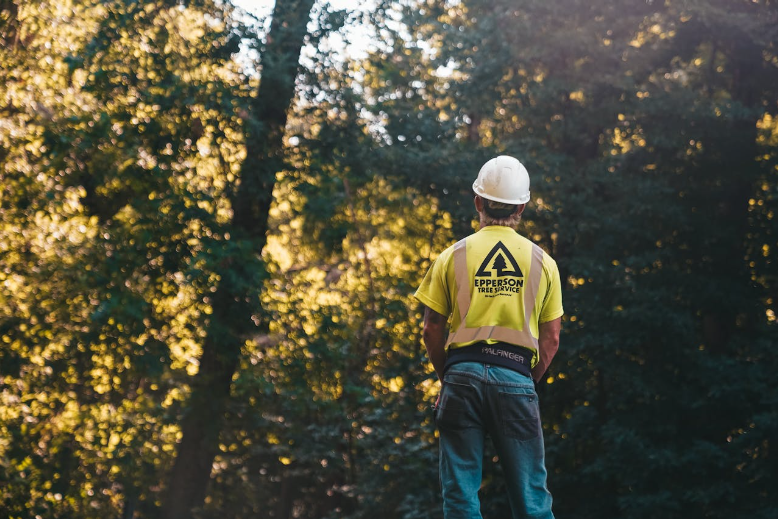ALSO YOU CAN LISTEN ON
In this episode of the YourForest podcast, host Matthew Kristoff sits down with Caroline Whitehouse, a forest health specialist with the Government of Alberta. They dive into the world of forest pests, focusing on the ecological importance of insects and how they contribute to forest resilience. Caroline shares her unique journey into entomology, emphasizing the need to appreciate insects not just as pests but as vital components of our ecosystems.
Caroline Whitehouse is a forest health specialist with the Government of Alberta, where she monitors and manages forest health, particularly in relation to insect populations. She is also completing her Ph.D., focusing on the role of insects in forest ecosystems. Caroline’s work highlights the importance of understanding and managing forest pests within the broader context of ecological health and resilience.
Matthew and Caroline explore the complex world of forest pests, discussing how insects like the mountain pine beetle play crucial roles in forest ecosystems. They talk about the challenges of managing these pests, the impact of climate change, and the importance of creating resilient landscapes. Caroline explains how disturbances, whether caused by insects or fire, are necessary for maintaining healthy forests. She also touches on the need for better monitoring and research to understand the full scope of insect biodiversity and conservation.
Key Takeaways:
Resilient Landscapes: Building resilient landscapes that can recover from disturbances is essential. This means promoting diversity in tree species, ages, and forest structures.
Insect Appreciation: Insects are fundamental to ecosystem processes. Rather than viewing them solely as pests, it’s important to understand their roles in nutrient cycling, pollination, and as food sources for other wildlife.
Monitoring and Research: There is a critical need for expanded monitoring and research on insect populations, particularly in the face of climate change. Understanding insect biodiversity is crucial for effective forest management.
Invasive Species: Urban forests are particularly vulnerable to invasive pests like the emerald ash borer. The spread of such species poses significant challenges for forest health and requires proactive management strategies.
To learn more about Caroline Whitehouse and her work, stay tuned for future episodes and follow the links provided below. Additionally, if you’re inspired by this episode, consider supporting your local ecosystems by planting a diverse range of native species in your yard and avoiding the use of harmful pesticides.
Follow Guest:
Entomological Society of Alberta
Sponsors
Quotes
46:25 - 46:53: “Insects are only pests as defined by us. Sure. They're just out there doing their thing right and living their lives and their populations fluctuate. And it's when it's something that becomes intolerable esthetically unpleasing to us or, you know, is potentially going to damage forest resources on a large scale, then that's a pest to us. It's kind of different in forestry, because in agriculture it's easy to define these. So we have a we have a process that's called integrated pest management.”
48:19 - 48:29: “When you remove a disturbance, that ecosystem becomes increasingly susceptible to exaggerated disturbances.”
Takeaways
Importance of Landscape Resilience (00:00:45)
Caroline emphasized that creating resilient landscapes is crucial to ensuring that ecosystems can undergo disturbances and recover their functions. She believes the focus should be on maintaining ecosystem processes rather than the physical appearance of forests.
Caroline’s Journey into Entomology (00:05:11)
Caroline shared her journey of becoming fascinated with insects, particularly during her university years when she took an entomology course. This experience opened her eyes to the diversity and complexity of insects, leading her to pursue a career in forest entomology.
The Role of Insects in Ecosystems (00:09:39)
Caroline discussed the fundamental role insects play in every ecosystem, from decomposition to pollination. She stressed that without insects, ecosystems would collapse, affecting all forms of life, including humans.
Pollinators: Beyond Just Bees (00:12:41)
Caroline discussed the role of various pollinators, not just honeybees, in ecosystems. She pointed out that native bees and other insects are critical to pollination and that honeybees are often misunderstood as the primary or only pollinators.
The Misunderstanding of Honeybees (00:14:09)
Caroline highlighted the common misconception that honeybees are native and the only important pollinators. She explained that honeybees are actually domesticated livestock and that their proliferation can negatively impact native bee species.
The Threats Facing Native Pollinators (00:18:17)
Caroline elaborated on the challenges facing native pollinators, particularly the impact of habitat loss, disease, and competition from non-native species like honeybees. She emphasized the need for conservation efforts focused on native species.
Citizen Science and Insect Monitoring (00:30:59)
Caroline spoke about the potential for citizen science in insect monitoring, acknowledging the challenges in identifying insects but also the value in public involvement and awareness in conservation efforts.
Disturbance: A Key to Boreal Forest Health (00:48:00)
Caroline highlighted that natural disturbances, including those caused by insects, are crucial for the boreal forest's renewal and succession. Removing these disturbances makes the ecosystem more vulnerable to larger, more damaging events.
Insect Conservation as an Ecological Imperative (01:18:26)
Caroline argued that insect conservation is vital for maintaining ecological balance. She mentioned that insects have an intrinsic value and are crucial for the survival of many other species, making their conservation an ecological imperative.
If you liked this podcast, please check out our YouTube channel, also please rate and review it, share it on Facebook, Instagram and Twitter tag a friend, and send your feedback and comments to yourforestpodcast@gmail.com.
ARTICLE
Why Insect Conservation Is Key to Maintaining Ecological Balance
Forests play a crucial role in maintaining the health of our planet, but they face serious challenges from climate change and deforestation. At the heart of these ecosystems are insects, vital for pollination and decomposition. Despite their small size, these creatures greatly impact forest health and biodiversity.
Caroline Whitehouse, a Forest Health Specialist at the Government of Alberta, emphasizes the importance of insects in sustaining forests. Her expertise sheds light on how these tiny organisms support ecological balance and why their conservation is critical.
In this article, we will explore the significant roles insects play and the threats they face, such as habitat loss and pollution. We will examine why protecting insects is essential for their survival and the entire forest ecosystem. Moreover, through Caroline Whitehouse's insights, we will learn about the current efforts to monitor and conserve insect populations and the strategies needed to maintain ecological balance.
Importance of Insects for Maintaining Ecological Balance
Insects play a crucial role in maintaining the health and functionality of ecosystems. Often overlooked, their contributions are vital for various ecological processes, including decomposition and pollination, which significantly impact flora and fauna.
Key Contributions of Insects
Decomposition: Insects help break down and decompose organic matter, such as animal waste and carcasses, preventing the accumulation of waste in ecosystems.
Pollination: Many insects, particularly bees, are essential for pollinating plants. This process is crucial for the reproduction of many plant species, affecting food resources and biodiversity.
The Value of Understanding Insects
Understanding insects enriches our knowledge of ecosystems and enhances our connection to nature. Recognizing the diversity and roles of insects can shift our perspective, highlighting their importance rather than viewing them as mere pests.
Photo by Nejc Košir on Pexels
Challenges Facing Insects
Despite their significance, insects face numerous threats:
Habitat Loss: Urban sprawl and landscape conversion significantly reduce the natural habitats available for insects.
Climate Change: Alters the habitats and survival rates of various insect species.
Pesticides and Pollution: These chemicals can be lethal to insects, reducing their populations and biodiversity.
Conservation Efforts for Maintaining Ecological Balance
Efforts to conserve and protect insect populations are crucial for maintaining ecological balance. Educating the public about the importance of insects and implementing conservation strategies can help mitigate the decline of these essential creatures.
Encouraging the planting of native flora and creating insect-friendly environments can support the survival and prosperity of insect populations.
Understanding and appreciating insects' complex roles in ecosystems can lead to more informed and effective conservation efforts, ensuring the sustainability of our natural environments for future generations.
Monitoring Insect Populations and its Impact on Maintaining Ecological Balance
Effectively monitoring insect populations is essential for understanding their impact on ecosystems and managing forest health. Various methods are employed to track and study these tiny yet crucial biosphere components.
Methods of Monitoring Insects
Aerial Surveys: Employed to assess large-scale forest defoliation indicative of pest outbreaks. This method tracks changes in forest canopy health over time.
Field Surveys: Ground teams conduct detailed examinations of specific areas, identifying damage and collecting insects for further analysis.
Trapping: Various traps, including species-specific pheromones and malaise, capture insects for population and behavioral studies.
Remote Sensing: Technologies like multispectral imaging and satellite observations assess vegetation health, indirectly reflecting insect activity.
Photo by Poranimm Athithawatthee on Pexels
Challenges in Insect Biodiversity Monitoring
Despite these methods, several challenges hinder comprehensive monitoring:
Complex Identification: Many insects require detailed examination to differentiate species, complicating large-scale surveys.
Limited Focus: Current monitoring often targets known pests, overlooking the broader spectrum of insect biodiversity.
Funding and Resource Constraints: Sufficient resources are crucial for expanding insect monitoring programs to cover more species and ecological interactions.
Importance of Soil Health Indicators
Insects are vital indicators of soil health, essential for overall ecosystem vitality. Monitoring soil-dwelling insects can provide insights into the biological quality of the soil, offering clues about the broader environmental conditions.
Future Directions in Monitoring Insect Populations for Maintaining Ecological Balance
Advancements in technology, such as environmental DNA (eDNA) analysis and improved remote sensing, promise to enhance our ability to monitor insect populations. These tools can help identify and quantify species even in complex environmental samples, providing a clearer picture of biodiversity and ecological health.
By integrating these advanced methods with traditional monitoring techniques, researchers can better understand insect roles in ecosystems and their responses to environmental changes. This integrated approach is crucial for developing effective conservation strategies and managing the health of our forests and other habitats.
Strategic Allocation of Resources in Forest Pest Management
When managing resources for forest pest management, prioritizing existing effective frameworks and expanding their capabilities ensures the most efficient use of funds. Enhancing robust networks and protocols already in place can significantly improve the monitoring and management of forest health.
Leveraging Existing Networks
Investing in established systems like the Alberta Biodiversity Monitoring Institute (ABMI), known for its comprehensive monitoring protocols, can enhance our ability to manage forest pests effectively. This approach improves the accuracy of pest population assessments and bolsters our understanding of ecological impacts.
Photo by Kelly on Pexels
Integrated Pest Management
Integrated Pest Management (IPM) is a holistic approach that emphasizes:
Preventive measures: To reduce the likelihood of pest outbreaks.
Monitoring: Regular surveillance to assess pest populations and their impact on the ecosystem.
Economic Thresholds: Determining the point at which pest populations cause unacceptable damage, guiding timely interventions.
Sustainable interventions: Utilizing methods that minimize ecological disruption, such as targeted pesticide applications when necessary.
This strategy helps balance economic needs with ecological health, adapting management practices to the specific challenges of forest ecosystems instead of agricultural settings.
Rethinking "Pests"
The term "pest" reflects a human-centric view of insects that otherwise engage in natural behaviors. These organisms play pivotal roles in ecological processes, such as forest succession and nutrient cycling, driven by their interactions with the environment and other species.
Recognizing this, the management focus shifts from eradication to understanding and integration within forest management practices.
Importance of Insects for Maintaining Ecological Balance
Insects contribute to ecological balance by:
Facilitating forest regeneration: Insects help maintain forest health and succession through their natural activities.
Providing food resources: They are a crucial part of the food web, supporting a variety of wildlife.
Enhancing biodiversity: Their actions promote diverse plant and animal life, contributing to a robust ecosystem.
Maintaining Ecological Balance Through Diverse Strategies
Maintaining ecological balance while sustaining economic gains presents a significant challenge in forest management. The goal is to cultivate a diverse forest environment without undermining the forest industry's economic contributions.
It is crucial to manage forests for their ecological benefits and economic value, particularly in regions like Alberta, where the forest industry plays a vital role. Adjusting government policies to support sustainable practices can encourage the industry to innovate without fearing punitive measures.
Photo by Grant on Pexels
Managing Regulatory Frameworks
Forest management is often constrained by rigid regulations that may not align with the current ecological realities. For example, regenerating a forest with species suited to its changing environment often conflicts with existing policies that dictate specific species planting.
Here lies the need for flexibility in regulatory frameworks to allow forestry professionals to use their expertise in making informed, site-specific decisions without excessive restrictions.
Assisted Migration and Species Diversification
Exploring assisted migration and introducing new tree species are potential strategies for enhancing forest resilience against climate change. However, these actions come with risks, such as the potential invasiveness of new species or unintended ecological impacts.
It is essential to approach these strategies cautiously, focusing on maintaining ecological balance and preventing adverse effects.
Implementing Innovative Practices
To foster a more resilient forest landscape, it is necessary to:
Encourage diversity: Promoting a variety of tree species and age classes can reduce the susceptibility of forests to pests and diseases.
Adapt management practices: Flexible management practices that can adapt to ecological changes are crucial for maintaining forest health.
Support professional autonomy: Allowing forestry professionals to make decisions based on their expertise can lead to more effective and adaptive management strategies.
Conclusion
In conclusion, insects are crucial for maintaining ecological balance. These small creatures play a vital role in our ecosystems by decomposing organic matter, pollinating plants, and supporting wildlife.
Despite facing significant challenges like habitat loss, climate change, and pollution, it is essential to strengthen conservation efforts. By improving our monitoring and conservation strategies, we can ensure the survival and prosperity of insect populations.
This effort will support insects and preserve the health of our broader ecosystems. These actions are vital for the well-being of all species, including humans, and highlight the importance of a balanced ecosystem for future generations.
FAQs
How does maintaining ecological balance help combat climate change?
Maintaining ecological balance ensures healthy ecosystems that can absorb carbon dioxide, regulate atmospheric temperatures, and support biodiversity, which are crucial for mitigating climate change effects.
What are the economic benefits of maintaining ecological balance in forests?
Healthy ecosystems contribute to the economy through ecosystem services such as timber production, recreation, and tourism. Maintaining ecological balance in forests ensures these services continue sustainably, supporting local and national economies.
How can local communities contribute to maintaining ecological balance in their areas?
Local communities can play a vital role by participating in reforestation projects, reducing waste, using sustainable resources, and supporting local conservation initiatives to help maintain ecological balance.
What role does wildlife play in maintaining ecological balance in forests?
Wildlife contributes to ecological balance by participating in natural processes like pollination, seed dispersal, and natural pest control, which help maintain healthy and resilient forest ecosystems.
How can urban planning be improved to support maintaining ecological balance?
Urban planning can integrate green spaces, promote biodiversity, implement sustainable water and waste management systems, and use environmentally friendly materials to help maintain ecological balance.





